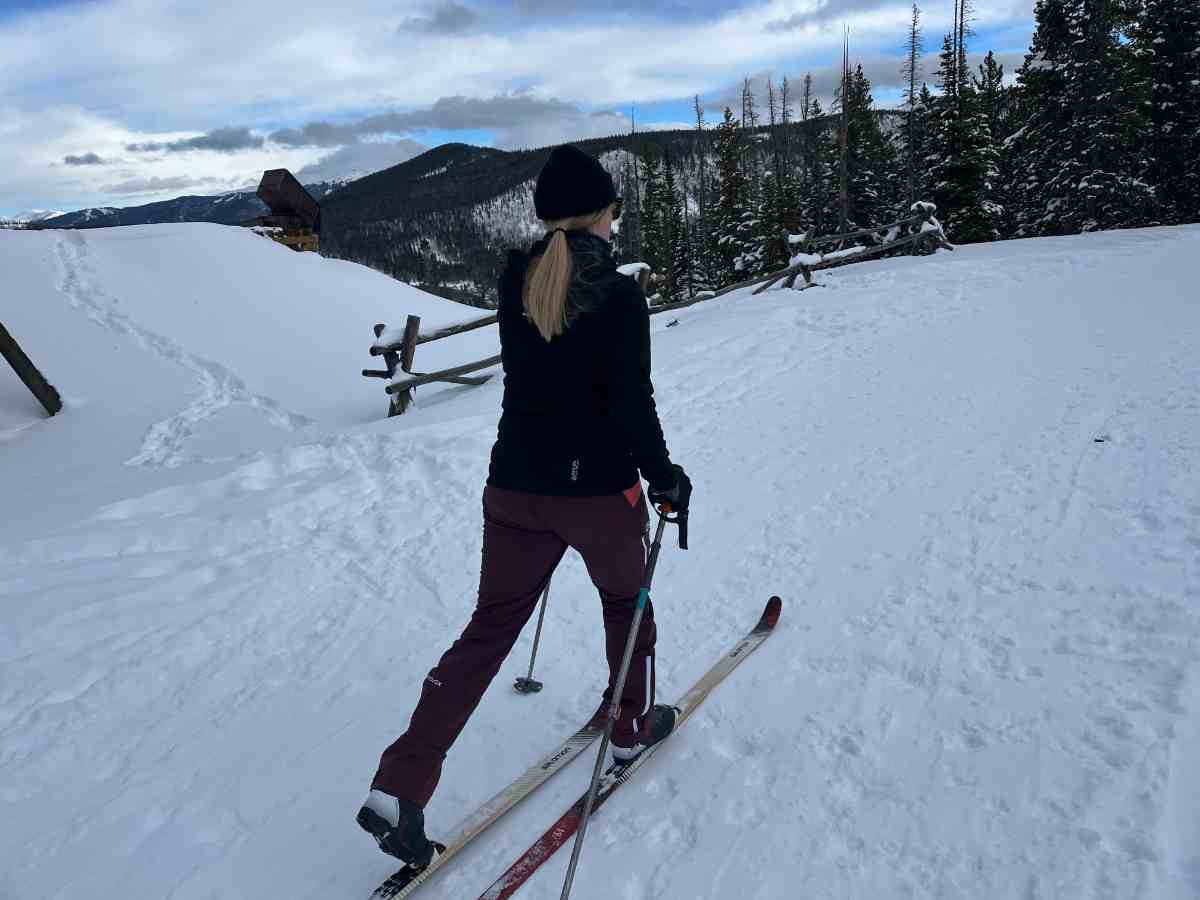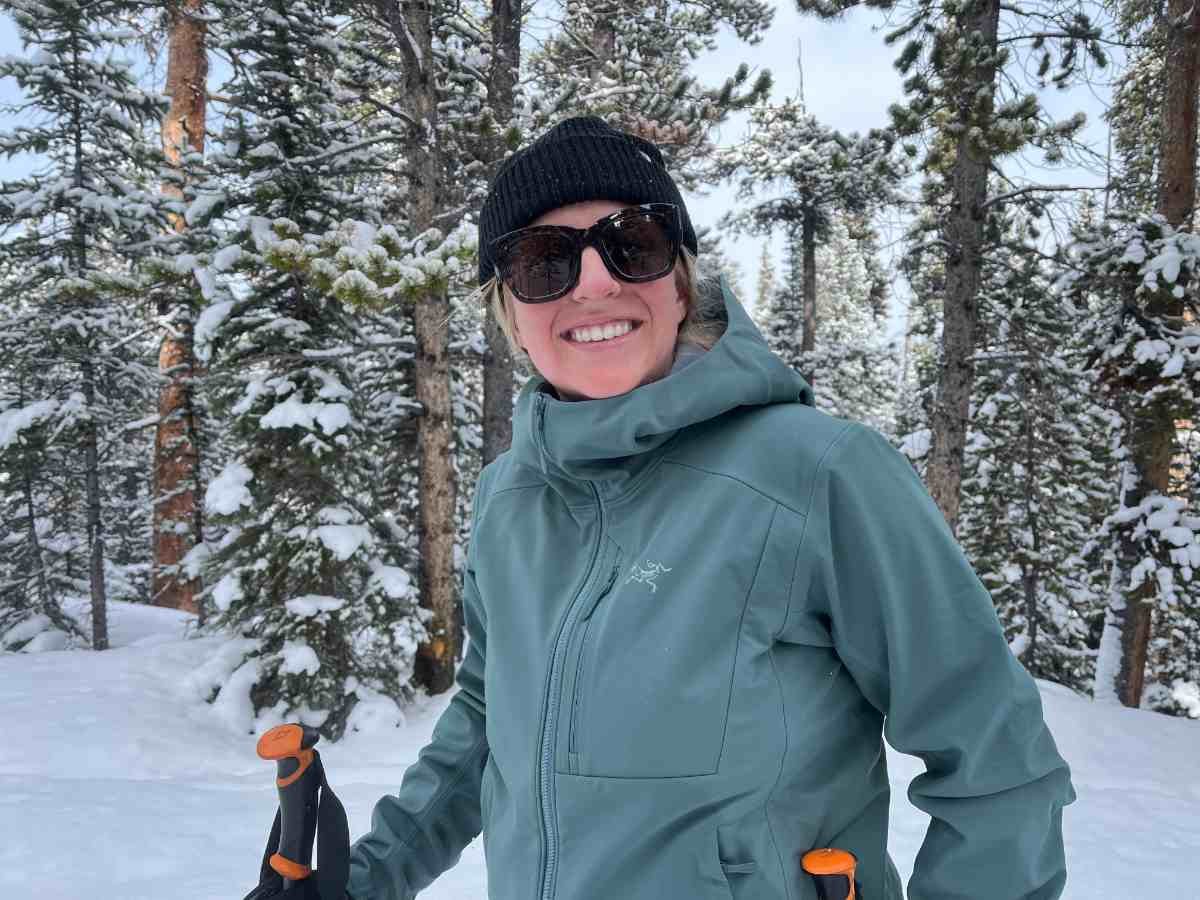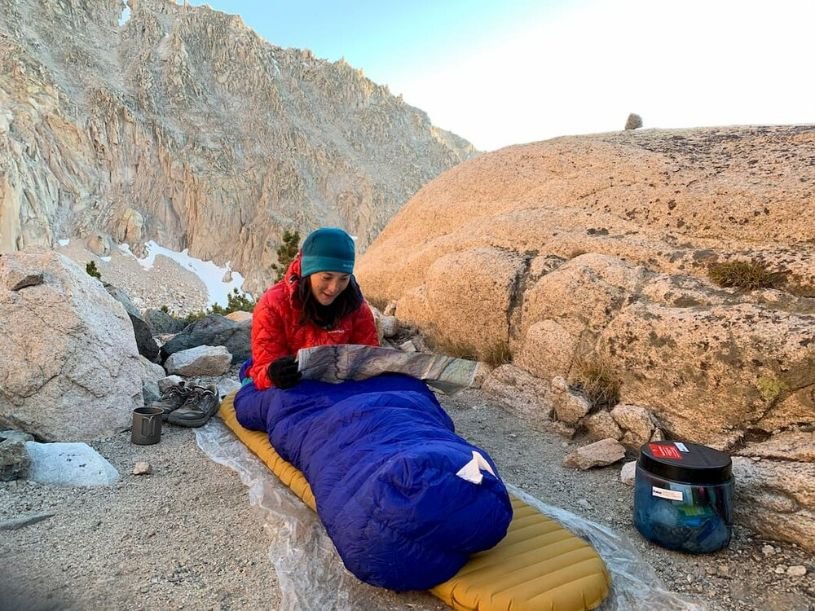What to wear cross country skiing: Tested gear for every trail condition
XC skiing essentials to stay
warm, dry, and comfortable
November 8th, 2024
Home > Gear Lists > Skiing and Winter
Winter may be a tough time to find motivation to get outside and exercise, but cross-country skiing is one great way to make that more fun. If you venture out on Nordic skis, it’s essential to know what to (and not to) wear to stay warm, dry, and comfortable. To do this, it may surprise you that you need to think a little less like a skier and more like a runner. Layering well and picking highly breathable materials and the right accessories will make all the difference in your comfort. Here, we give a rundown on the essential gear items for cross-country skiing.
Related: Cross-Country Skiing for Beginners
We create reader-supported, objective gear reviews independently selected by our editors. This story may contain affiliate links, which help fund our website. When you click on the links to purchase gear, we may get a commission — without costing you an extra cent. Thank you for supporting our work and mission of outdoor coverage for every body! Learn more.
WHAT TO WEAR CROSS-COUNTRY SKIING CHECKLIST
IMPORTANCE OF PROPER CLOTHING FOR CROSS-COUNTRY SKIING
Dressing for cross-country skiing is not what many folks new to the sport might expect. Unlike the highly-insulated and weatherproof layers, helmet, goggles, and big mittens needed for a day of riding chairlifts at the ski resort, Nordic ski apparel actually looks a lot more like winter running gear than alpine ski gear.
Nordic skiing requires a lot more work and is far more active and aerobic than downhill skiing at a resort. Generally, you’re moving constantly, so ultra-warm layers are often not ideal – instead, breathability and mobility are crucial. This means that these features must be balanced, paired with enough protection for cold weather and winter conditions. Choosing the proper layers and accessories makes all the difference for comfort and safety when cross-country skiing.
Related: read our review of our staff’s favorite insulated pants for this winter season.
BASE LAYER
IMPORTANCE OF MOISTURE-WICKING MATERIALS
One of the best ways to stay warm in winter, especially during aerobic activities, is to stay dry. Choosing the right base layer and the right layering materials can make all the difference. Opt for next-to-skin layers made from materials that wick moisture and dry quickly, such as nylon or polyester.
Patagonia Capilene Midweight
RECOMMENDED FABRICS
Wool is an excellent base layer material, especially for winter activities. It is excellent at thermoregulation—meaning it both insulates and helps to keep you cool when necessary. It also wicks moisture from the skin and is odor-resistant. It’s often better for your body and the environment, too. If you can invest in quality wool base layers, this is one of the best and most useful items to add to your Nordic gear kit. (They’re great for lots of other activities, too!)
Another good material for base layers is a technical blend of synthetic fabrics, often polyester or nylon. These fabrics also wick moisture from the skin and dry very quickly. The downside to these fabrics is that they tend to absorb odors, but they are often less expensive than their wool counterparts, making them an excellent option for folks on a budget.
Avoid absorbent materials for activities like Nordic skiing — cotton in particular. Cotton does not wick moisture well and takes a long time to dry, so whether it gets wet from snow or sweat, it’s likely to end up as a cold, wet layer against your skin, leading to discomfort at best and hypothermia at worst.
CONSIDERATIONS FOR VARYING TEMPERATURES
It’s always important to layer according to the weather; you want to stay warm but avoid overheating. Opt for thicker base layers and more insulation on cold days, but remember that starting on the cold side is okay since you will be moving. A light base layer and a light jacket may be all you need on warmer days.
MID LAYER
A cross-country skier in an Arc’Teryx Gamma softshell outer layer.
TYPES OF INSULATION (E.G., FLEECE, DOWN, SYNTHETIC INSULATION)
There are many types of mid layers out there, from lightweight fleece to puffy insulating layers (both down and synthetic). Light and breathable mid layers are usually best for cross-country skiing since it’s less likely to cause overheating and excessive sweating. Fleece layers that have some breathability (we like The North Face Summit Futurefleece) are an excellent choice that can be versatile in a variety of temperatures. On a cold day when more insulation is needed, opt for synthetic active insulation (like the Patagonia Nano Air Hoodie or Arc’teryx Atom Hoodie).
For light, down or synthetic, and breathable mid layer options, be sure to check out our Best Down Vests for Men and Best Down Vests for Women guides.
Down is a great insulator, but most down jackets are not as breathable as many fleece and synthetic options, which is why we recommend those specifically for Nordic skiing. In addition, down loses much of its insulating properties when wet, so using it during aerobic activities isn't recommended.
The North Face Summit Series Futurefleece Full Zip Hoodie
LAYERING TECHNIQUES FOR ADAPTABILITY
It's ideal to select your layers for a Nordic ski carefully so you don’t have to adjust while you’re out. Consider the weather and conditions—don’t forget to account for things like wind and sun exposure. Opting for breathable apparel, like technical base layers and softshells, will help to avoid needing to shed layers while you’re skiing.
Other things to consider when planning your layers is how far and fast you intend to go. A casual, slow-paced ski with friends might warrant an extra layer. When you plan to pick up the pace, be careful not to overdress to avoid excessive sweating.
BALANCING WARMTH AND BREATHABILITY
Balancing warmth and breathability is what staying comfortable during winter aerobic activities is all about, and that’s especially true with cross-country skiing. Remember that you will warm up as you move, so don’t overdo the insulation and opt for layers that prioritize breathability while still offering some weather protection.
OUTER LAYER
WATERPROOF AND WINDPROOF CONSIDERATIONS
While breathability is paramount when it comes to layering for cross-country skiing, it’s still a winter sport where weather protection is also an important piece of the gear puzzle. Often, outer layers that are fully wind and waterproof (like burly GORE-TEX shells) are not as breathable as other options, like softshells.
For most folks, a softshell jacket is the best option for outerwear because it offers sufficient wind resistance and water resistance (though not usually fully water and windproof) while remaining breathable so you don’t overheat and end up with sweat-soaked layers that ultimately lead to being cold and uncomfortable.
Outer layers that have a balance of breathability and wind protection, in particular, are ideal because they help prevent overheating while also blocking a harsh winter breeze from causing you to cool down rapidly.
TYPES OF CROSS-COUNTRY SKIING JACKETS AND PANTS
Types of jackets and pants used for Nordic skiing vary, but generally, a lightweight softshell is most common and usually preferred by most cross country skiers out on the track. Rather than reaching for jackets and pants you might wear downhill skiing, think about layering like you might for a winter jog. Pick lighter jackets and pants with wind protection and light insulation.
Our favorite jacket for Nordic skiing is the Ortovox Swisswool Col Becchei Hybrid softshell. The back and side panels are a stretchy and breathable softshell material, while the front and tops of the arms have light wool insulation for chilly winter days. Generously sized pit zips allow for venting when sweat starts to build up. It’s the perfect combo of breathability and warmth for higher-output winter activities like cross-country skiing. (It does run small, so size up if you’re considering adding this to your gear closet.)
Ortovox Swisswool Col Becchei Hybrid Jacket
For cross country ski pants, it’s no surprise that our favorite winter running pants are also our favorite for Nordic skiing. The Patagonia Wind Shield Pants have the ideal balance of breathability and weather protection, all wrapped in a comfortable and stretchy fabric. There’s just enough room underneath for a thin base layer on extra cold days, but for most situations, these do the trick without a base layer. Zips at the ankles leave the option for tucking in or pulling over your boots, depending on the conditions.
Patagonia Wind Shield Pants
VENTILATION OPTIONS FOR TEMPERATURE REGULATION
Having ventilation options in your outerwear is especially helpful with a highly active winter sport like cross-country skiing. You want to be able to release body heat and keep sweat at a minimum. Opt for breathable fabrics first and foremost, but also look for jackets with pit zips and pants with thigh vents if you tend to heat up quickly.
ACCESSORIES
GLOVES OR MITTENS FOR HAND PROTECTION
Like with most other gear for Nordic skiing, opt for a pair of lightweight gloves rather than your warmest mitts to keep your digits warm. Cross-country skiing also involves a lot of arm movement, which helps keep your hands warm. A light pair of gloves that offer some wind protection and resist moisture is ideal. If your hands run cold, opt for something a little warmer.
Swix Solo Training Gloves
The author in her Skida Nordic Hat.
HATS OR HEADBANDS TO RETAIN HEAT
For an aerobic activity like cross-country skiing, you’ll want a barrier to protect at least your ears–and often your head, too–from the cold and wind, but you don’t want something so warm that it causes you to sweat. A fleece-lined headband that covers your ears is a great option for warmer days. We also love the Nordic and Alpine hats from Skida for XC skiing.
NECK GAITERS OR BUFFS FOR ADDITIONAL WARMTH
A neck gaiter is the unsung hero of layers for cross-country skiing. Your body is working hard and staying warm, but your face is still exposed to harsh winter conditions. A neck gaiter or Buff is ideal to keep your face warm without causing the rest of your body to overheat. It also helps keep the air you’re breathing in a little warmer, which is especially helpful with cold air temperatures. Opt for materials that wick and dry quickly, like merino wool or lightweight fleece and synthetics.
SUNGLASSES OR GOGGLES FOR EYE PROTECTION
It’s crucial to protect your eyes in winter, no matter how cloudy the day is, since the reflective nature of snow can damage your eyes. Always wear UV-protective eyewear—any pair of good sunglasses works well as long as they’re comfortable and the lenses offer decent coverage.
If you like more technical eyewear, opt for sporty wrap-around frames that block wind and snow while having small slots for venting to avoid foggy lenses. A personal favorite for all-around active use (from Nordic skiing to mountain biking) is the Smith Wildcat Chromapop or Bobcat for smaller faces.
SUNSCREEN AND LIP BALM FOR SUN PROTECTION
Sun protection for your face is just as important (if not more so) in winter as in summer. Be sure to wear sunscreen on any part of your face that is not covered by clothing (and don't forget under your nose and chin; remember, snow is reflective!). An SPF-rated lip balm is also a great thing to have in your pocket for winter activities.
Supergoop Play Everyday SPF 50
FOOTWEAR
CHOOSING THE RIGHT CROSS-COUNTRY SKI BOOTS
Aside from ensuring that your boots are compatible with your bindings (ensure that you have either NNN BC or BC compatibility for both), the most critical factor with Nordic boots is that they have a proper and comfortable fit. Ensure that the boots “break” at the right place on your foot when trying them on. This means that when you flex your ankle forward like you would when kicking and gliding on your skis, the boot should comfortably and naturally bend where your foot does.
Also, consider whether you plan to spend your time – in the backcountry or on groomed trails. Aside from binding compatibility, the boots for front-country classic skiing are often slimmer and shorter than backcountry boots.
When selecting specific boots, aside from ensuring they’re compatible with your bindings, simply select the boot that fits best. Fit is ultimately more important than other small features, and that means the best boot will be determined by your foot shape and size.
IMPORTANCE OF MOISTURE-WICKING SOCKS
Socks are an important (if not a little boring) piece of gear for winter activities, especially cross-country skiing. Merino wool is excellent for warmth, wicking, and odor control. Synthetic fabric works, too; just avoid absorbent materials like cotton. As for fit, select socks that have a snug and contoured fit. If they’re too loose or thick, you may risk getting blisters.
Unlike alpine skiing, because the boots are shorter, a crew-length hiking sock (such as Darn Tough) is usually better for Nordic skiing than over-the-calf ski socks, but this is ultimately left to personal preference.
Darn Tough Hiker Micro Crew Socks
GAITERS FOR KEEPING SNOW OUT
While gaiters are typically not necessary if you ski at a Nordic center or on a maintained and groomed trail, they can be helpful for cross-country skiing in the backcountry, where you’re more likely to encounter deep snow and more variable conditions.
HOW TO DRESS FOR VARYING WEATHER CONDITIONS
If the weather looks fickle when you’re headed out for a cross-country adventure, don’t be afraid to bring a small backpack for shedding or adding layers as needed. Alternatively, having versatile layers, like jackets with venting zips and hoods or a buff that can be adjusted as needed, will help to regulate your body temperature and keep you comfortable even as conditions change.
SAFETY TIPS
IMPORTANCE OF VISIBILITY ON THE TRAILS
Being visible on the trail is important no matter where you are, but especially so in the backcountry. Having some bright colors or reflective gear will help you to be seen by others while you’re out and about. For some of our favorite reflective and hi-vis gear you could use while Nordic skiing, check out our Best Reflective Running Gear guide.
EMERGENCY CLOTHING CONSIDERATIONS (E.G., EXTRA LAYERS)
If you’re headed out for an extended backcountry Nordic adventure, you should plan and pack like you would for a big hike. Bring extra layers and snacks in a pack, and be prepared by knowing your route and the area and having emergency gear, like some form of communication, on hand.
CHECKING THE WEATHER FORECAST BEFORE HEADING OUT
Since winter can be so harsh and fickle, always check the forecast before going for a Nordic ski. This will help you decide on your layering for the day and help you determine if you should bring any spare layers in a pack. It’s also important to know your threshold for cold temperatures. If the weather looks particularly nasty, wait out the storm or consider going another day.
ABOUT THE AUTHOR / WHY YOU SHOULD TRUST US
A true mountain dweller, Stasia feels far more at home on a high alpine ridge than on a busy city street. She’s worked as a backpacking guide in Southeast Alaska, has held a WFR cert, AIARE 1, AIARE 2, and Avalanche Rescue certifications, and is working to become an avalanche education instructor. She’s now a full-time freelance writer and editor working primarily in the outdoor recreation realm. Her bylines can be found in Backpacker, 5280, and REI’s Uncommon Path, among others, and she’s been testing and writing about gear for nearly a decade. She is also the managing editor of the new print zine, Trails Magazine.
Stasia has been living in the mountains her entire life and has multiple seasons of cross-country skiing in the books. She learned as a way to stay in shape in the winter and as a complement to downhill and backcountry skiing and generally gets out a few days a week in the winter. Aside from doing them herself, she’s been writing about winter sports, including all types of skiing, and testing winter gear for more than a decade.










